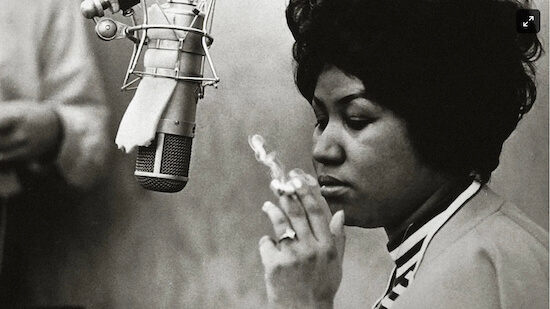
“I’m looking for a really big hit for Aretha, How about writing a song called ‘Natural Woman?’”
This is probably the best creative brief I have ever heard, though the full story is even better, in Ian Leslie’s latest “The Ruffian” substack post.
(You Make Me Feel Like) A Natural Woman is one of Aretha Franklin’s greatest performances, and one of the best records ever made. Aretha makes its words sound deeply, volcanically personal, singing them with a joy so intense it comes close to pain. A Natural Woman speaks of love and intimacy and fulfilment. The critic Dave Marsh called it, “the greatest record ever made about female sexuality”. It has been heard as a celebration of womanhood, and of black womanhood in particular.
The song itself did not well up from Aretha’s soul or from anyone with lived experience of what it has come to represent. Its words were written by a white man, Gerry Goffin, its gospel-inflected music by a Jewish woman, Carole King. A Natural Woman was composed to order, by professional songwriters. I love its origin story, as told in King’s autobiography (which is named after the song).
In 1967, King was 25 and had already been writing hit songs with Goffin, her husband, for seven years. (They scored their first big hit when King was 18 and Goffin was 21: Will You Still Love Me Tomorrow, performed by The Shirelles – not a bad way to launch a pop career). They were walking down Broadway one evening, when a black limousine with dark windows pulled up alongside. The rear window slid down, and a a face they knew looked out at them: Jerry Wexler, co-head of Atlantic Records.
“I’m looking for a really big hit for Aretha,” Wexler said. Aretha Franklin had joined the label less than a year before and had made a couple of big hits, including Respect; now Wexler was searching for her next single. Goffin and King were immediately interested. “How about writing a song called ‘Natural Woman’?” said Wexler. Then he rolled his window up, and his car eased back into the traffic.
First, this is a great illustration of “never make a point without telling a story“.
Beyond that, though, it is succinct, and gives just enough information for the brilliant songwriting duo to do their best work, and what a piece of genius work it was.
Ian Leslie defines a creative brief in his post as:
a distillation of everything that the client needs to achieve with their budget, honed to a point fine enough that when the creatives go to work they produce something that’s both effective and creative.
It sets objectives for the work. Not necessarily quantifiable ones like sales, but what we want consumers to think, do, and feel when they see the ad. It also hints at possible routes to take and tries to reframe the problem in an interesting way. The brief is a work of alchemy, transmuting the analytical and linear into the intuitive and lateral. It’s somewhere between an instruction and a suggestion. It is both logical and surprising, and, at its best, an act of creativity in itself.
It is also best when it is a creative constraint, such as the positioning statement for an architecture firm that I was part of developing a few years ago, “We Know the Art of Building”, noted in this post: “Creative Constraints: The fish, the sea and the barrel“. Ian’s post also explains in more detail what he understands by a creative constraint and how powerful that can be, plus he does it far more eloquently than I did.
Finally, he frames the question to ask when you are considering writing your own version of the perfect brief:
What do I want people to think, do, and feel after reading/listening to/watching/experiencing this?
